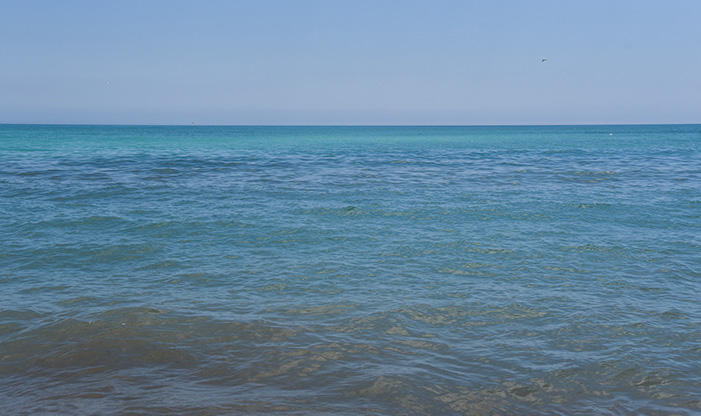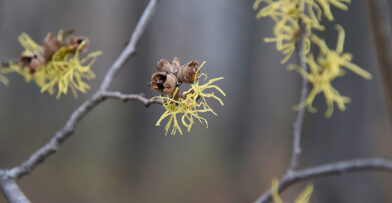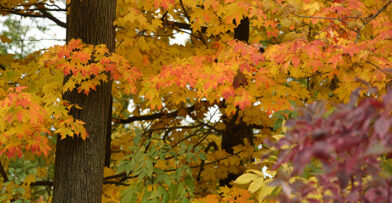Even though Milwaukee is located on the brilliant, multi-hued waters of Lake Michigan, you might not think about this Great Lake every day. Yet, there is no denying its wonderous importance for the people living in Wisconsin. Lake Michigan is used as a resource, as well as a source of recreation, beauty, and inspiration. There are many reasons to be grateful for having this great lake in our region, and it deserves our protection.
The importance of Lake Michigan can’t be overstated. It is the fifth largest freshwater lake in the world, and as a Great Lake, part of the largest water system on the planet. This system makes up 21% of the available fresh surface water on earth, and 84% of the fresh water within the US. The lake’s immensity in this regard alone makes it indispensable.
The water in the Great Lakes Basin is used by 40 million people annually as a resource, providing fresh drinking water. Residents of Wisconsin, Illinois, Michigan, and Indiana all use Lake Michigan water. Apart from the benefits of having a vast resource on our doorstep, there are other reasons the lake is a jewel to our region.
Lake Michigan’s History
Native Americans called the lake “Michi gami,” translated as great water, which is where the name Lake Michigan originated. They were the first to harness the great fertility of the region through agriculture, hunting, fishing, and transportation.
Historically, cities and civilizations have developed near bodies of water because of the rich resources they provide. Food, water, and transportation are made available to people by surface water. Milwaukee, Chicago, and port cities were designed to take full advantage of their locations on the shores of Lake Michigan.
Shipping has been an important aspect of trade throughout the area’s modern history. Lake Michigan is 118 miles wide at its widest point, and 301 miles long, making it a major transportation route. Ports in Milwaukee, Chicago, and other coastal cities have created hubs of commercial activity that bolster the entire region. Originally shipping timber in the 1800s, other goods that have been transported using Lake Michigan have included agricultural products, leather, iron and steel, and manufactured goods, contributing to the growth of cities on its coasts.
Lake Michigan & Climate
Lake Michigan stands out for its effect on the weather because it functions as a heat sink. The moisture in the air coming from evaporated lake water makes it cooler near the lake, creating micro-climates. Plants bloom up to two weeks later in the spring near the lake because of this, and people even see different species closer to the shoreline compared to inland. In fact, when people look at regional vegetation maps for Wisconsin, the species near the lake are similar to those located in central Wisconsin, just because of the difference in climate. Because of this, some areas near Lake Michigan are considered climate havens and population centers can be protected against the extreme temperatures associated with climate change.
The climate makes the lake environment a great space to enjoy the outdoors during summer. With such a pleasant environment nearby, people flock to Lake Michigan for recreation. Visitors to the beach may see Lake Michigan swimmers, surfers out all winter, beach goers, stand up paddle boarders, volleyball players, and more. People who enjoy other nature-inspired activities have access to attractive parks located near the lake to observe wildlife and go birding.
Local Culture Along The Lakeshore
Local culture benefits from the presence of Lake Michigan, as can be attested to by people who enjoy attractions located near its shore. Summer festivals get a boon from the beautiful environment. Milwaukee is known for its iconic Summerfest, Lakefront Festival of Art, and many more gatherings. There are about 14 tourist-friendly harbor cities in Wisconsin dotting the coast that often host lake-inspired festivals during the summer.
Regional artists are inspired by Lake Michigan’s beauty. Poets may find refuge in the beauty of the lake, and painters abound. Most of Wisconsin’s harbor cities contain museums, galleries, and art venues in which to enjoy these creations. Art is often tied to activism and can include projects whose purpose is to inspire action toward protecting the lake. Melanie Ariens is a local artist whose work often focuses on the Great Lakes. She is Creative Arts Manager at Milwaukee Water Commons, a cross-city network that fosters connection, collaboration, and broad community leadership on behalf of our waters.
The lake and the work being done around it is so important that international observers come to Milwaukee to learn how to conserve and best utilize freshwater resources. We are fortunate to be the site for UWM’s School of Fresh Water Sciences, which uses science to help solve freshwater and climate issues. The school also focuses on challenges related to human and ecosystem health, freshwater dynamics, technology, policy, and economics, among others.
If you want to learn more about Lake Michigan, read the influential book The Death and Life of the Great Lakes, written by Wisconsin native and science journalist Dan Egan. It is a sweeping chronicle of North America’s largest fresh-water lakes and the environmental threats they face, and can be considered a source book for issues related to our Great Lakes.
The Importance To Birds & Other Wildlife
Visitors to Schlitz Audubon enjoy many of the benefits made possible by its location on the shore of Lake Michigan. Birders enjoy the benefits of the Mississippi Flyway, a route for birds that stretches northward through the Midwest roughly following the Mississippi River and includes the coast of Lake Michigan. Birds who travel from Central and South America and the southern US to their nesting grounds in the northern US, Canada, and Alaska during spring migration use this route. Lake Michigan and the habitats located on its shoreline provide perfect refueling spots for migrating birds.
The open area on Lake Michigan is a migratory stopover and wintering area for waterfowl, land birds, and shorebirds. The habitats on the lake stretching from Schlitz Audubon and extending northward to Grafton are designated an Important Bird Area, part of the Ozaukee Bight Lakeshore Migration Corridor.
If you love Lake Michigan views, the Center offers one of the best in the city. There are no impediments to seeing the lake from our shoreline, and we have the longest continuous beach in Milwaukee. It is a beautiful place to view wildlife, go for a hike on the beach, and even find occasional fossils and beach glass.
Protecting The Lake
Schlitz Audubon recognizes the importance of protecting the lake, and our conservation work and partnerships demonstrate our commitment. The Stormwater Wetland and Ravine Restoration Project, completed in 2021, uses a forward-thinking stormwater conveyance system to reduce runoff into Lake Michigan while preventing erosion in our north ravine. The restoration coincided with expanded educational opportunities, habitat creation, and accessibility improvements.
We also participate with organizations whose goals are to similarly promote the health of our lake water. Our partnership with the Milwaukee Metropolitan Sewage District includes educational programs for schools about water quality, and our work with the Alliance for the Great Lakes promotes Lake Michigan awareness, beach clean-up programs, and citizen science.
Educational programs about Lake Michigan are key towards educating current and future generations about the importance of water and Lake Michigan. These programs serve both adults and students throughout the Greater Milwaukee Area, many of them serving underrepresented neighborhoods and schoolchildren.
There are many simple ways to help protect Lake Michigan. Residents can avoid pouring chemicals and other substances down their drains, as they will go directly into the lake. Conserving water is another important factor in preserving our freshwater resource, so families should avoid using more than they need. Also, avoid throwing litter on the ground or into the lake. Finally, cultivate an appreciation and learn to enjoy our wonderful resource and its gifts to the community.
Join in a multi-cultural community event celebrating the gift of our shared water. We Are Water is presented by Milwaukee Water Commons and takes place on the beachfront of Lake Michigan at McKinley Beach on Sunday, August 11. Learn more!
Written with contributions from AJ Grill and Drew Shuster.


